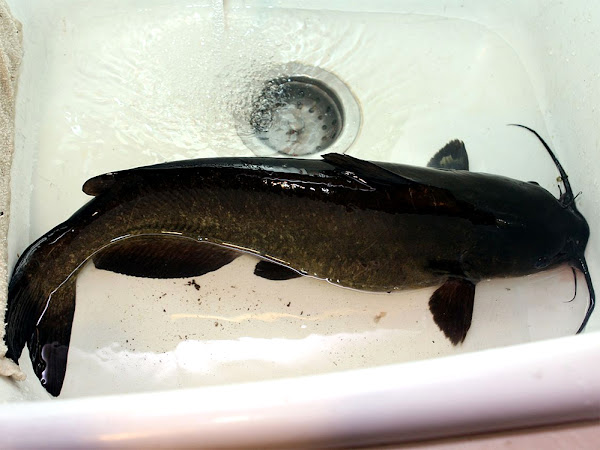The Channel catfish is the most numerous catfish species in North America. It is also known as Lady Cat, Willow Cat, Forked-tail Cat, Fiddler, Spotted Cat and is informally referred to as a ‘channel cat‘.
It is the most fished catfish species in the United States with approximately 8 million anglers targeting this fish pear year. It is the official fish of Iowa, Missouri, Kansas, Tennessee and Nebraska.
The popularity of Channel catfish for food has contributed to the rapid expansion of aquaculture of this species in the United States.
It is native to the Nearctic, and is well distributed in lower Canada and the eastern and northern United States. It is also available in some parts of northern Mexico.
Along with the availability in the native area, these fish have also been introduced into some waters of landlocked Europe and parts of Malaysia and almost as many parts of Indonesia.
In Canada, the Channel catfish is largely, though not exclusively, limited to the Great Lakes watershed from Lake Nipigon southward. However, read some more information about this catfish below.
Channel Catfish Characteristics
Like other catfish species, the Channel catfish has no scales in their body. It’s body can be blue, gray, silver or almost black in coloration.
The belly is generally white or cream colored. It has a single bony spine in each pectoral fin and the dorsal fin, and 8 barbels around the mouth.
These fish have a deeply forked tail and the upper jaw is longer than the lower jaw. The dorsal and pectoral spines are sharp and deeply serrated, and the anal fin is curved and has between 24 and 30 rays.
The small Channel catfish are generally more silver in color and often have many black spots on their sides.

Average live body weight of these fish is around 4.5 kg, but they can reach about 18-23 kg. Photo and info from Wikipedia.
Feeding
The Channel catfish are omnivorous bottom feeders. Their regular diet includes insects, mollusks, crustaceans, fish and some plant material.
The smaller sized fish (less than 4 inches) generally eat mostly small insects.
Breeding
The Channel catfish begin spawning in late spring or early summer, when water temperatures reach pretty high. They generally reach maturity in 2 or 3 years in captivity.
The males select nest sites which are normally dark secluded areas such as cavities in drift piles, logs, rocks, undercut banks, cans etc. A gelatinous egg mass is deposited in the bottom of the nest which is of golden-yellow color.
The males generally guard the nest, and actually they may eat some of the eggs if they are disturbed. It will take around a week for hatching the eggs.
And the fry remain in the nest for about another week under the guardianship of the male. The females lay a gelatinous mass which contain around 8,000 to 15,000 eggs.
Uses
The Channel catfish is used mainly for food. It is also used for sport fishing.
Special Notes
The Channel catfish is the most common and mostly fished catfish species in the United States. It ranks behind only bass and crappie as the most preferred fish to catch in Texas.
These fish are generally most abundant in large streams with low or moderate current. They can survive well in small and large rivers, reservoirs, ponds and natural lakes.
Today the fish is used mainly for food, but also popular for fishing. However, review full breed profile of the Channel catfish in the table below.
| Name | Channel Catfish |
| Kingdom | Animalia |
| Phylum | Chordata |
| Class | Actinopterygii |
| Order | Siluriformes |
| Family | Ictaluridae |
| Genus | Ictalurus |
| Species | I.punctatus |
| Binomial Name | Ictalurus punctatus |
| Other Names | Also known as Lady Cat, Willow Cat, Forked-tail Cat, Fiddler, Spotted Cat and is informally referred to as a ‘channel cat‘ |
| Breed Purpose | Mainly food, also fishing |
| Weight | Generally 4.5 kg, with a maximum weight of around 18-23 kg |
| Special Notes | Omnivorous, most common and mostly fished catfish in the United States, ranks behind only bass and crappie, most preferred fish to catch in Texas, generally most abundant in large streams with low or moderate current, raised mainly for food, also popular for fishing |
| Breeding Method | Natural |
| Climate Tolerance | Native climates |
| Body Color | Can be blue, gray, silver or almost black |
| Rarity | Common |
| Availability | Worldwide |






